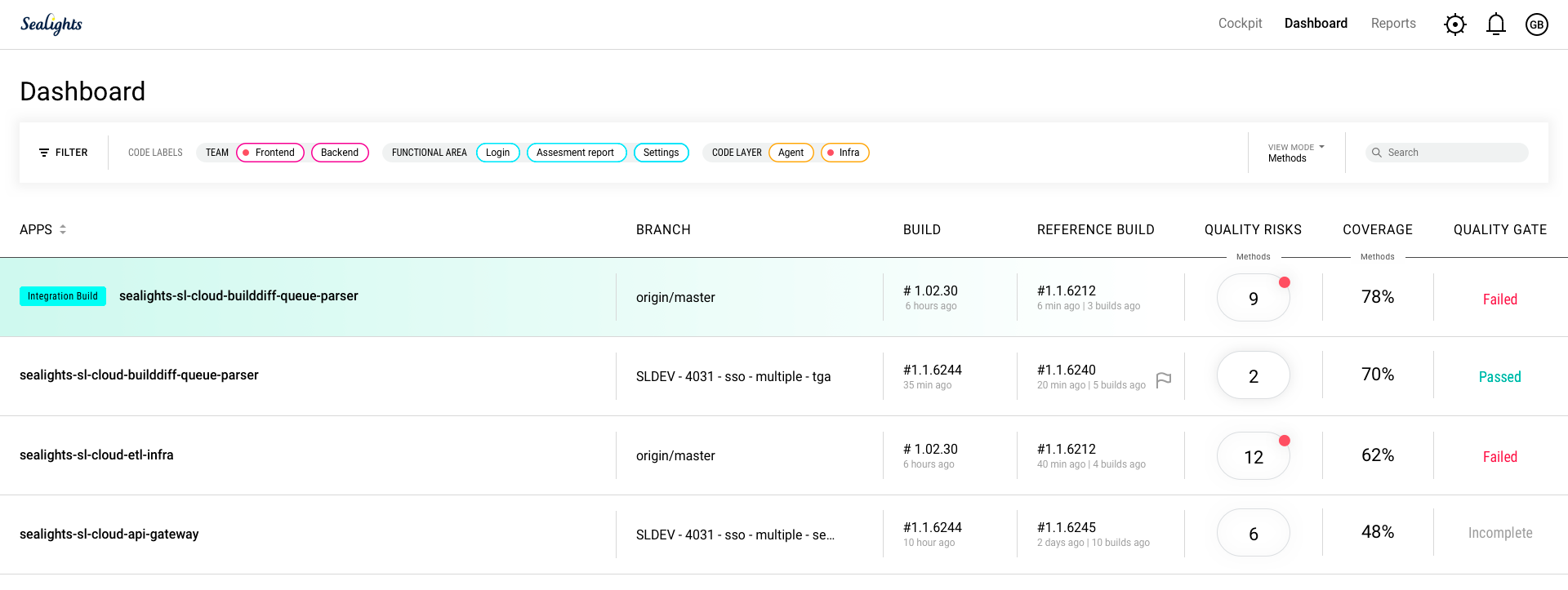As a tech lead practicing continuous delivery, I am under constant pressure to make sure my team releases high-speed quality software. In order to move faster, I have implemented a shift-left approach so that my team catches bugs earlier in the software development process.
One of my biggest pet peeves is when my team wastes time fixing bugs after a release for code changes that were not even tested. This is something that could be prevented with a shift-left approach and instead, I am forced to waste time and resources.
What if it was possible to make sure that all untested code changes didn’t reach production? The result would be a high-quality product and my team could focus on rapidly developing new features.
Tracking all of my untested code changes sounds great in theory, but realistically accomplishing analytical work like this would take a huge chunk of time out of my workday, as well as a lot of extra resources (money and manpower).
This is where SeaLights’ Quality Risk comes in.
What is a software quality risk?
A quality risk is a newly modified code that was not tested in any test stage (unit, integration, regression, functional, and even manual). Untested code changes can occur at any time throughout the entire software development process and are threats to the quality of the product.
How does SeaLights’ Quality Risk work?
It automatically shows me where my untested code changes are so that I can easily focus my team’s test development and make educated go-no-go decisions with minimal effort. I can catch these untested code changes at any stage of the software development process:
- Before a merge
- Before promoting to the next environment
- Before a release
If I accomplish shift-left testing and catch these quality risks early on, then the quality of my software increases. This feature has helped our customers reduce their weekly incidents, release time and amount of rollbacks.
As we explained above, quality risks are dangerous to my code – but what happens if I have a lot of them? How do I know where to actually focus my test development?
Prioritize your software Quality Risks
In July 2019, SeaLights released a new addition to its Quality Risk feature. SeaLight’s Top Quality Risk allows me to scope and prioritize the quality risk data important to me and my software. I decide which areas of my code are “high-risk” and set my quality gates accordingly, while SeaLights automatically takes care of analyzing the data and insights that are customized to my apps and teams in order to prevent bugs where they matter the most.

To make this even easier, SeaLights will send real-time notifications via Slack and email of top quality risks so that they can be immediately taken care of and prevented from reaching production.
Here at SeaLights, we eat our own dog food; we use SeaLights in order to develop SeaLights. I can’t emphasize enough how essential the Top Quality Risks capability is to our entire software development process. It’s an incredible experience to be able to automatically track our top quality risks and feel confident after every merge, promote, and release that we did not miss any high-priority untested code changes.
It completely eliminates my pet peeve so that I can focus on more important things.
If you are interested in speaking to one of our product experts about Top Quality Risks or any of our other features, fill out the form below.